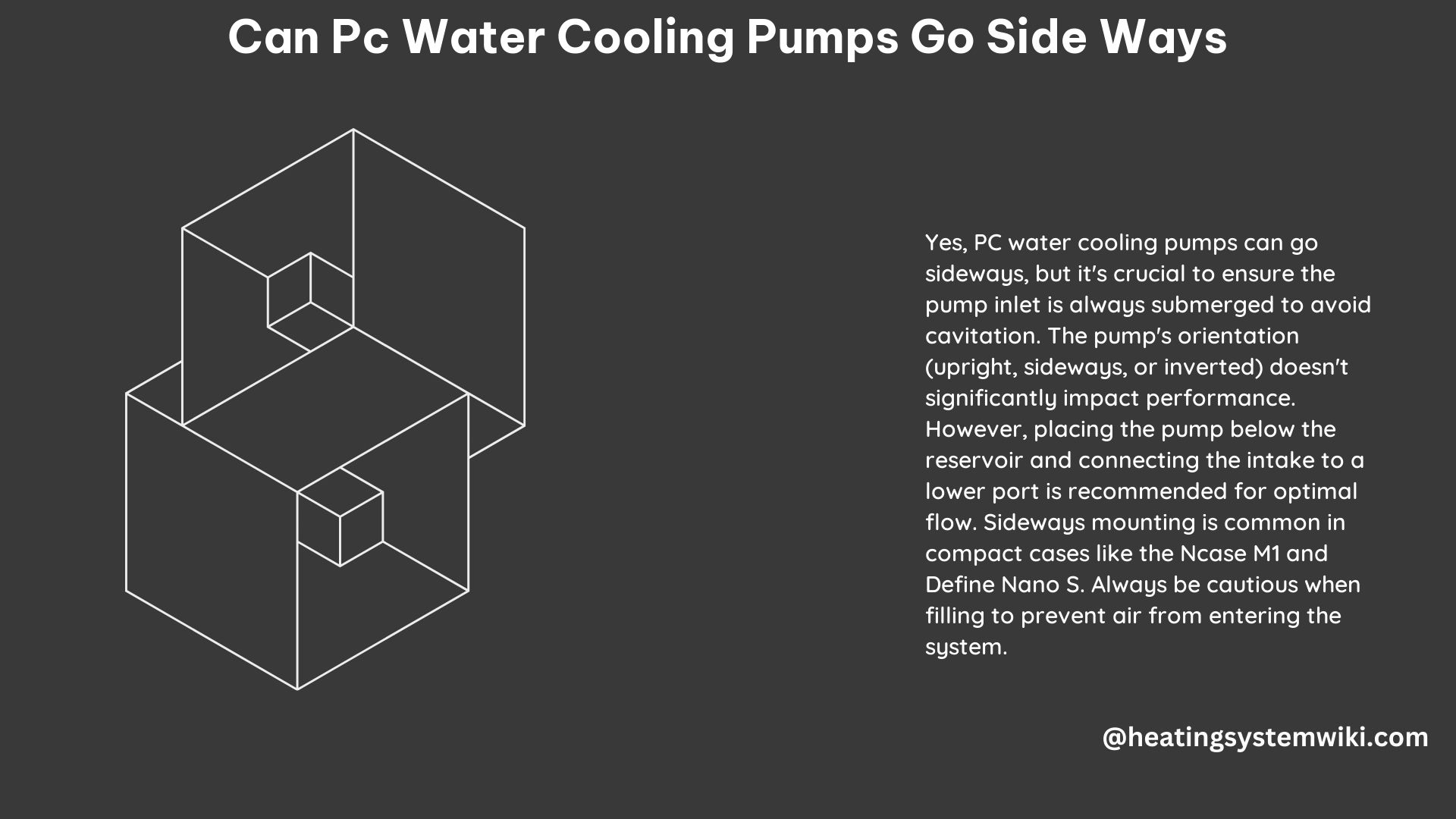PC water cooling pumps can indeed go sideways, and this is a common practice in many water-cooled builds, especially in compact cases like the Ncase M1 or the Define Nano S. Mounting the pump/res combo sideways can help save space and improve the overall aesthetics of the build.
Mounting a Pump Sideways: Technical Considerations
When it comes to the technical specifications of mounting a pump sideways, it’s essential to ensure that the pump is always submerged in the coolant. This is because the pump relies on the coolant to create a pressure difference, which drives the fluid flow. If the pump is not submerged, it can cause cavitation, which is the formation of vapor bubbles in a liquid that can lead to damage and reduced pump performance.
Avoiding Cavitation
To avoid cavitation, it’s recommended to have some hydrostatic pressure on the inlet of the pump when it’s mounted sideways. This can be achieved by ensuring that the reservoir is above the pump and that the intake is connected to one of the ports on the reservoir that sits below the pump.
The recommended minimum hydrostatic pressure for a typical PC water cooling pump is around 0.5 to 1 meter (1.6 to 3.3 feet) of water column. This can be calculated using the formula:
Hydrostatic Pressure (Pa) = ρ × g × h
Where:
ρ = Density of the coolant (typically around 1000 kg/m³ for water-based coolants)
g = Acceleration due to gravity (9.8 m/s²)
h = Height of the coolant column (in meters)
For example, if the reservoir is placed 1 meter (3.3 feet) above the pump, the hydrostatic pressure would be:
Hydrostatic Pressure = 1000 kg/m³ × 9.8 m/s² × 1 m = 9,800 Pa (or 0.98 bar)
This hydrostatic pressure would be sufficient to prevent cavitation and ensure proper pump operation.
Filling the System
When filling the system with coolant, it’s crucial to be careful and ensure that the pump is always underwater, especially during the initial filling and when changing the coolant. This can be done by placing the entire PC on its side so that the pump is underwater during the filling process.
It’s important to note that the fill port should be positioned at the highest point of the system to allow for proper air bleeding. Additionally, the system should be filled slowly and carefully to avoid introducing air bubbles that could affect the pump’s performance.
Pump Orientation and Performance

The orientation of the pump, whether it’s mounted vertically or sideways, can have a slight impact on its performance. However, this impact is generally minimal, and most high-quality water cooling pumps are designed to operate effectively in various orientations.
According to the manufacturer’s specifications, the maximum recommended tilt angle for a typical PC water cooling pump is around 45 degrees from the vertical. Beyond this angle, the pump’s performance may start to degrade due to the increased risk of cavitation and reduced lubrication of the pump’s internal components.
It’s important to note that the pump’s performance is primarily determined by factors such as the pump’s design, impeller size, and the overall system’s resistance (i.e., the length and diameter of the tubing, the number of fittings, and the components being cooled). The pump’s orientation is just one of the many factors that can influence the overall system’s performance.
Conclusion
In summary, PC water cooling pumps can be mounted sideways, and this is a common practice in many water-cooled builds. However, it’s essential to ensure that the pump is always submerged in the coolant and that there is sufficient hydrostatic pressure on the inlet of the pump to avoid cavitation. When filling the system with coolant, it’s crucial to be careful and ensure that the pump is always underwater, especially during the initial filling and when changing the coolant.
While the pump’s orientation can have a slight impact on its performance, the overall system’s performance is primarily determined by factors such as the pump’s design, the system’s resistance, and the quality of the components used. By following the recommended best practices for mounting and filling the system, you can ensure that your PC water cooling pump operates reliably and efficiently, even when mounted sideways.
Reference:
– Can I mount my pump/res combo sideways?
– Can a pump run on its side?
– Can I turn my water cooled computer on its side?
